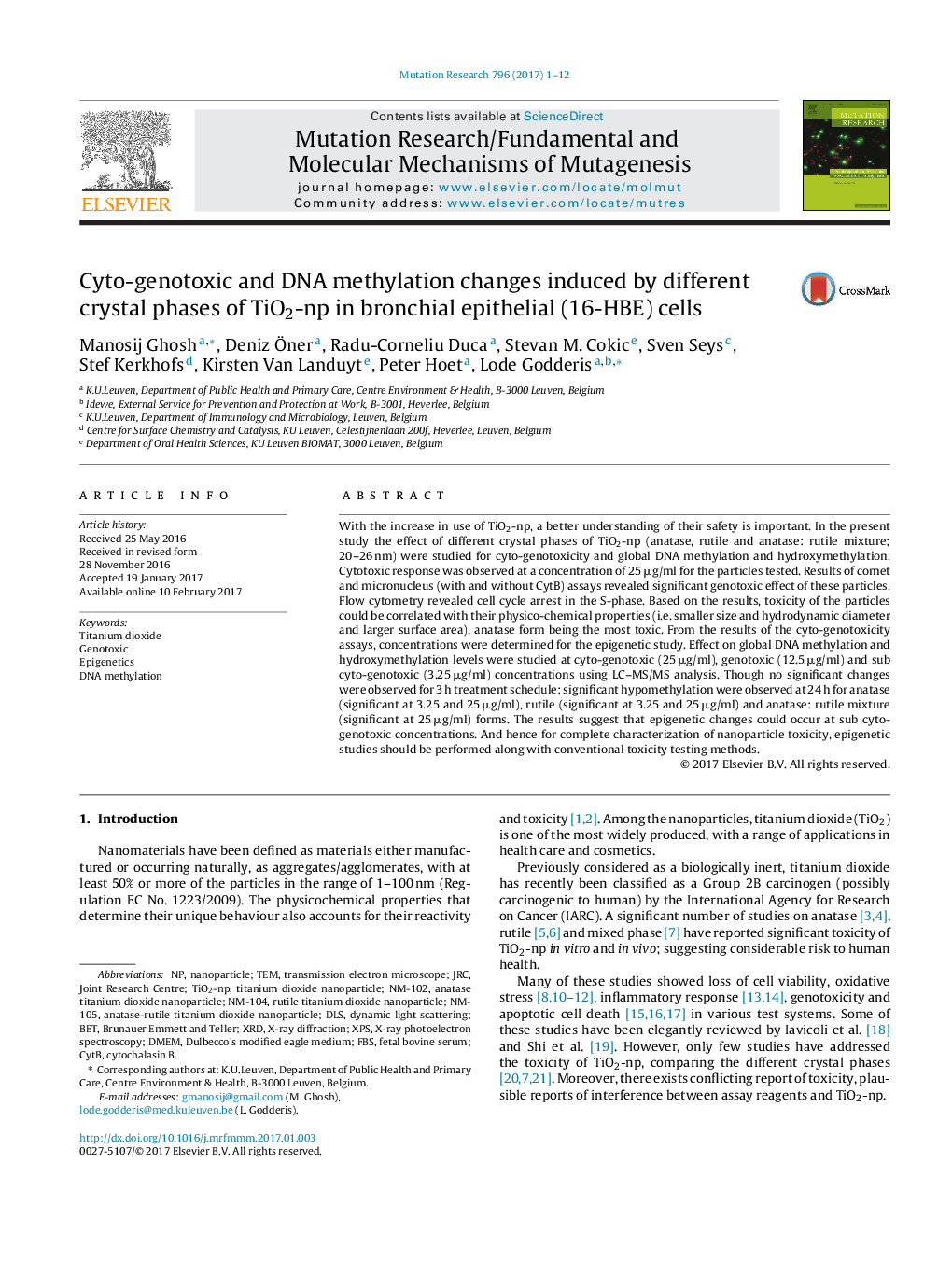| Article ID | Journal | Published Year | Pages | File Type |
|---|---|---|---|---|
| 5528721 | Mutation Research/Fundamental and Molecular Mechanisms of Mutagenesis | 2017 | 12 Pages |
â¢Comet and micronucleus (with and without CytB) assays revealed significant genotoxic effect of TiO2-np.â¢TiO2-np induces cell cycle arrest in the S-phase.â¢Anatase form induces more cyto-genotoxic effect compared to rutile and anatase-rutile mixture.â¢Significant hypomethylation were observed at for anatase, rutile and anatase: rutile mixture.
With the increase in use of TiO2-np, a better understanding of their safety is important. In the present study the effect of different crystal phases of TiO2-np (anatase, rutile and anatase: rutile mixture; 20-26 nm) were studied for cyto-genotoxicity and global DNA methylation and hydroxymethylation. Cytotoxic response was observed at a concentration of 25 μg/ml for the particles tested. Results of comet and micronucleus (with and without CytB) assays revealed significant genotoxic effect of these particles. Flow cytometry revealed cell cycle arrest in the S-phase. Based on the results, toxicity of the particles could be correlated with their physico-chemical properties (i.e. smaller size and hydrodynamic diameter and larger surface area), anatase form being the most toxic. From the results of the cyto-genotoxicity assays, concentrations were determined for the epigenetic study. Effect on global DNA methylation and hydroxymethylation levels were studied at cyto-genotoxic (25 μg/ml), genotoxic (12.5 μg/ml) and sub cyto-genotoxic (3.25 μg/ml) concentrations using LC-MS/MS analysis. Though no significant changes were observed for 3 h treatment schedule; significant hypomethylation were observed at 24 h for anatase (significant at 3.25 and 25 μg/ml), rutile (significant at 3.25 and 25 μg/ml) and anatase: rutile mixture (significant at 25 μg/ml) forms. The results suggest that epigenetic changes could occur at sub cyto-genotoxic concentrations. And hence for complete characterization of nanoparticle toxicity, epigenetic studies should be performed along with conventional toxicity testing methods.
